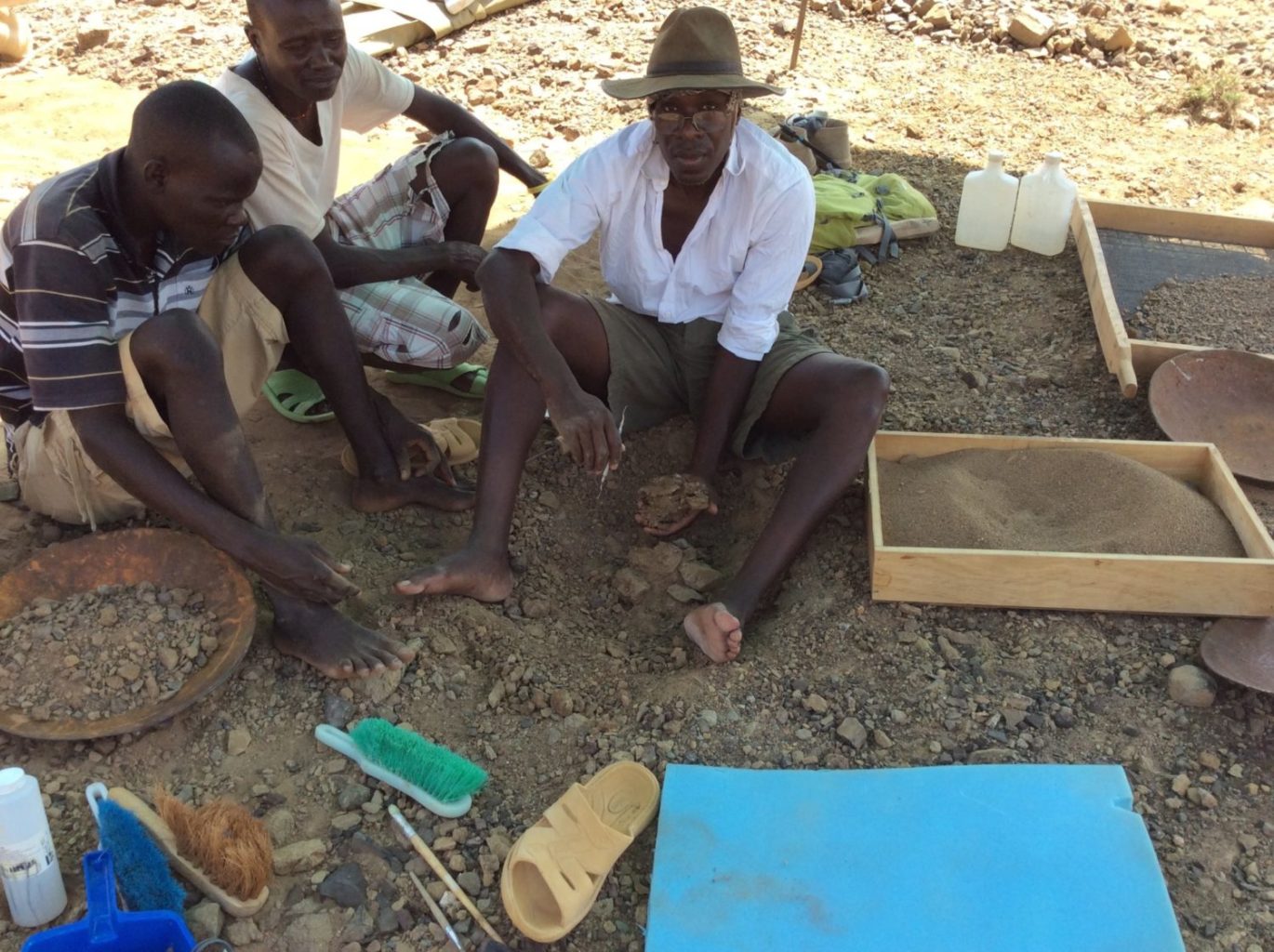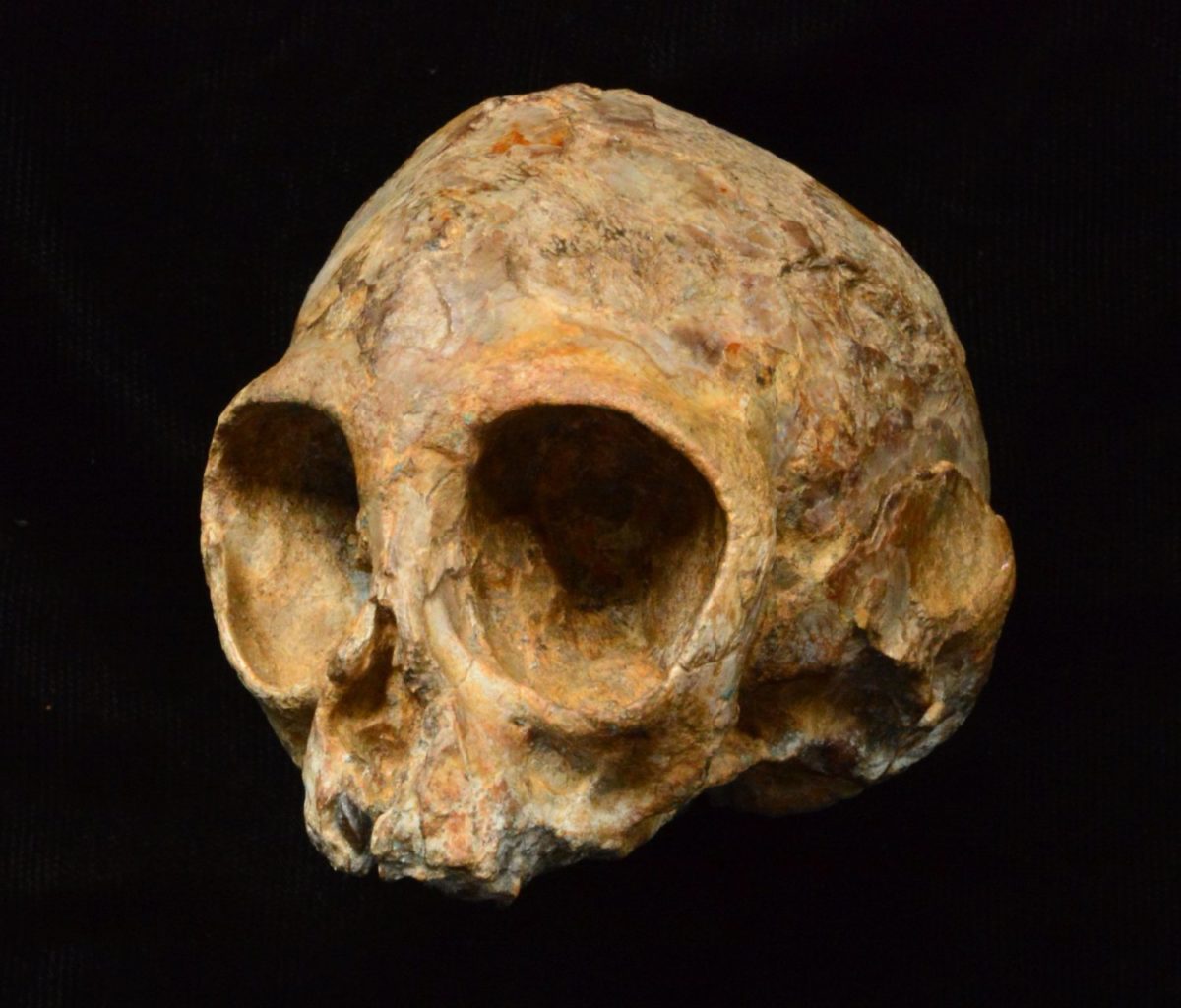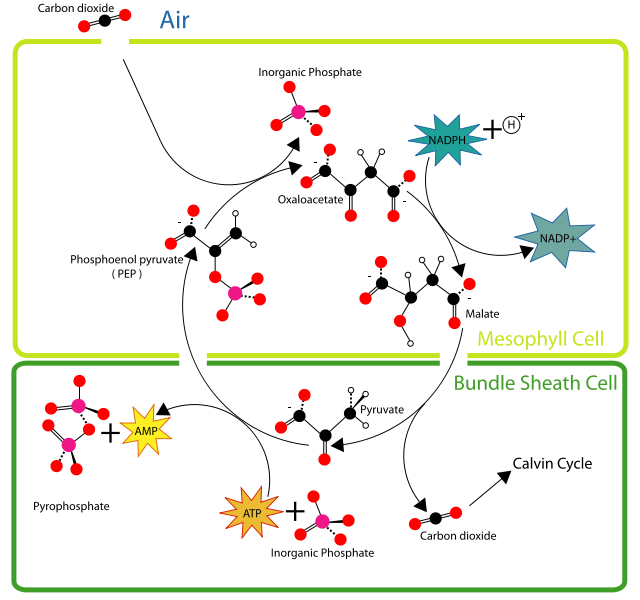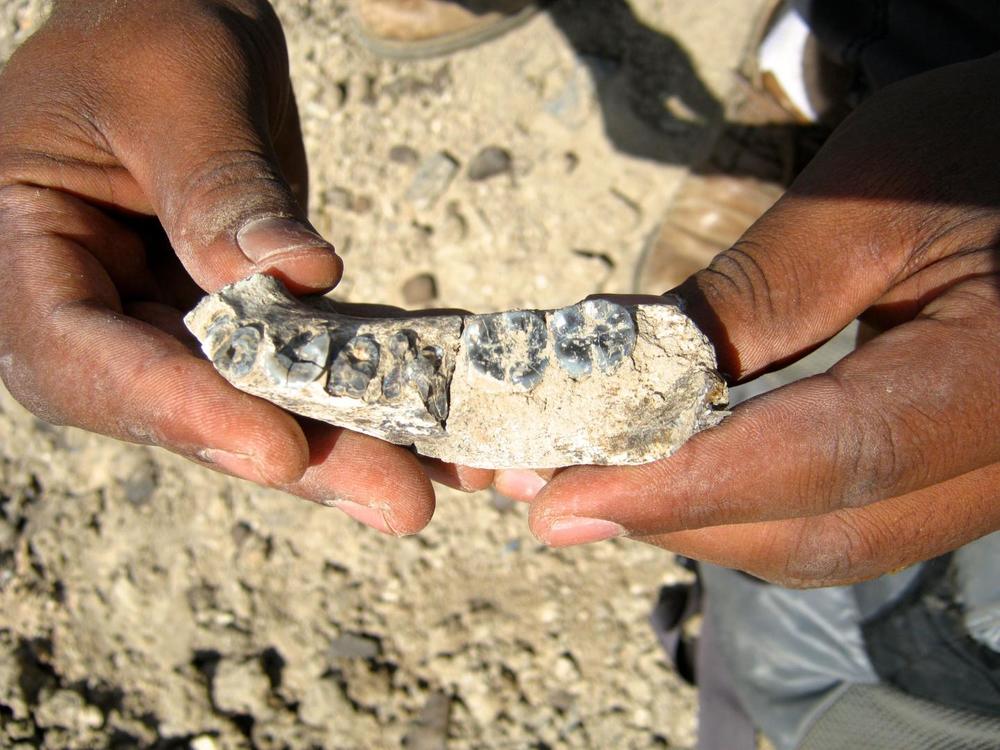Behind the Science | In the News | Journal Article
Research findings on ‘Alesi,’ a newly discovered 13 million-year-old fossil ape species, were published this week in the journal Nature, and the story has been carried widely in the press. The research team behind the Nyanzapithecus alesi discovery has collaborated to put together this list of questions and answers.
Q: What is the difference between apes and monkeys, and where do humans fit in?
A: Apes are typically characterized by the absence of a tail, whereas monkeys do have a tail. Humans evolved from a long extinct ape species, and we share the lack of a tail.
Q: How can you tell Alesi is an ape and not a monkey?
A: Alesi has teeth like an ape rather than any kind of monkey that ever lived in Africa. In addition, Alesi possesses fully developed bony ear tubes, another feature shared with living apes that is not found in more primitive primates.

Q: Why is the fossil skull nicknamed ‘Alesi’?
A: It is taken from the new species name Nyanzapithecus alesi, which was suggested by John Ekusi, the discoverer of the fossil, because ‘ales’ means ancestor in the local Turkana language.
Q: How do we know how long ago Alesi was alive?
A: The rock layer from which the fossil derived could be identified. A sample of this rock was found to be 13 million-years-old by our project geologist Craig Feibel and dating specialist Sara Mana, based on measurements of argon isotopes. The time period is known as the Miocene.
Q: What is the Miocene?
A: The Miocene is the geological age that lasted from approximately 23 to 5 million years ago. Apes emerged during this time period and became widespread in Africa and Eurasia.

Q: How can you see that Alesi was an infant rather than an adult?
A: Alesi still had its baby teeth, and none of the adult teeth had yet erupted. The baby teeth can no longer be seen because they broke off when the skull fossilized, but the roots are still in place. The unerupted adult teeth inside the skull can be seen with X-ray imaging.
Q: How do we know how old Alesi was when she/he died?
A: When teeth grow they leave daily growth lines, just like the rings inside a tree. Using an extremely sensitive form of X-ray imaging, our team member Paul Tafforeau could make these growth lines visible in the unerupted teeth of Alesi. By counting them he could calculate an age of one year and four months.
Q: Do we know if Alesi was a boy or girl?
A: At present we cannot tell whether Alesi was a boy or girl. In humans and apes the features of the skull that distinguish males from females only appear after a certain age, and Alesi was simply too young to display these.

Q: What did Alesi look like?
A: Compared with living primates the skull looks most like that of a baby gibbon, for example by having a relatively small snout. We don’t have direct evidence about the rest of the body because no other bones than the skull were found. However, there is one indirect clue. The balance organ inside the skull gives information about the way an animal moved around (see additional question below). In the case of Alesi, it suggests slower, more deliberate movements than the tree swinging of gibbons. Hence, Alesi probably did not have the long arms of gibbons that make this acrobatic behavior possible.
Q: If Alesi looked like a baby gibbon, does this mean that it was an extinct gibbon living in Africa?
A: No. The researchers found that gibbon head shape with a small snout evolved several times in primate evolution. For example, the living leaf-eating monkeys (colobines) look superficially like gibbons as well, despite being distantly related. Gibbon-like features evolved independently each time, and does not demonstrate that animals were related to gibbons.
Q: Why is Alesi a new species?
A: Its molar teeth are very similar in shape to those of other species in the genus Nyanzapithecus, which indicates that Alesi belongs to this group. However, its teeth are much larger, suggesting that it was a larger species than the others.
Q: Do we know how Alesi died?
A: The area where Alesi was discovered was long ago blanketed by thick layers of ash from huge volcanic eruptions. Alesi might have been buried and perished in one such ash fall, but we do not know for sure.
Q: Fossil skulls are regularly found and reported in the press. Why is this one any different?
A: Little is known about the time before the living apes started to evolve, which in Africa was only previously documented by isolated teeth and broken jaw fragments. Alesi is not only the most complete extinct ape skull yet found, but it also comes from this poorly understood time period.
Q: Does this discovery mean that humans evolved from apes 13 million-years-ago?
A: No. Alesi is from a time when the common ancestor of all living apes and humans was alive in Africa. In contrast, humans themselves diverged from apes much later, sharing a last common ancestor with chimpanzees about 7 million years ago.

Q: Among the living apes, humans are least related to orangutans and gibbons, which both live in Asia only. Does this not mean that ape ancestors lived in Asia rather than Africa?
A: Some experts believe that the ancestors of all living apes evolved in Eurasia, while others believe they evolved in Africa first and then spread to Eurasia. Alesi and its direct relatives are all found in Africa and closely related to the living apes, supporting the idea that the living apes evolved in Africa.
Q: How can you see from the inner ear how an animal moved around?
A: The inner ear is not only the place where you perceive sound (sense of hearing) but also where you perceive how your head is moving (sense of balance). This balance organ leaves an impression in the surrounding bone, so that this can be studied even in fossil skulls that are many million years old. Detailed X-ray imaging revealed that Alesi had a balance organ (semicircular canals) that is associated with slower, more deliberate movements, rather than the acrobatic arm swinging of gibbons.
The work was supported by The Leakey Foundation and trustee Gordon Getty, the Foothill-De Anza Foundation, the Fulbright Scholars Program, the National Geographic Society, the European Synchrotron Radiation Facility and the Max Planck Society.
Publication
“New infant cranium from the African Miocene sheds light on ape evolution.” Nature August 10, 2017. doi:10.1038/nature23456.
Nengo, I., Tafforeau, P., Gilbert, C.C., Fleagle, J.G.., Miller, E.R., Feibel, C., Fox, D., Feinberg, J., Pugh, K.D., Berruyer, C., Mana, S., Engle, Z. and Spoor, F.


